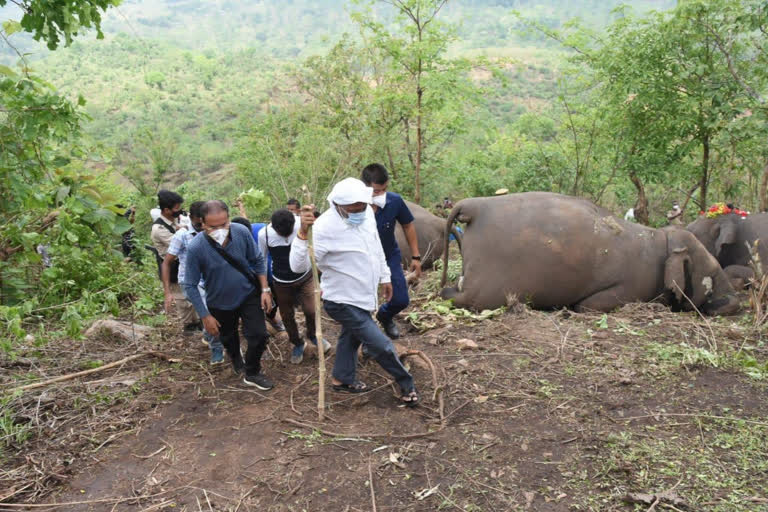New Delhi: The death of at least 18 elephants on Wednesday night in the Bamuni Hills area under the Kothiatoli forest range of Nagaon in central Assam may be the biggest single recorded wildlife deaths due to lightning in India.
Videos shot by local villagers that went viral show the carcasses of the dead pachyderms lying in a small area in the hilly forest that doesn’t have too much vegetation or canopy cover which could have possibly saved the pachyderms.
The sparse vegetation on a hill-top is uncharacteristic of a forest in Assam underlining the fact that human incursions may have begun and rampant deforestation was well underway.
“A few decades ago, this area was a thick and dense forest. While the tragic incident has been attributed to lightning, the large-scale deforestation in the area had shorn it of any canopy of large trees which would have otherwise served as a protective cover from a lightning strike,” says Dr Chandan Sarma, a professor who teaches at the Tezpur Central University situated across the Brahmaputra river.
“Therefore, the authorities will have to look beyond the immediate cause and address the larger and deeper issues concerning rising man-elephant conflict in the state including wanton destruction of forests.”
Read: Armed forces rope in Battlefield Nursing Assistants to help in COVID care
While Assam is familiar with tragedy striking its wildlife almost every year when the floodwaters of the mighty Brahmaputra spills over the banks inundating vast tracts of the Kaziranga national park killing hundreds of animals, it is the first time that lightning has claimed the lives of so many animals in a single incident.
“In the history of wildlife in India, it may be the worst disaster ever due to such causes. Although such and worse incidents have occurred elsewhere,” says Bijoyananda Choudhury, a well-known elephant tamer and wildlife enthusiast.
Choudhury recalled the August 2016 incident when a herd of more than 320 reindeer died due to a lightning strike during a thunderstorm in the Hardangervidda national park in southern Norway making it the deadliest lightning strike on wildlife in history.
Scientists figure that during thunderstorms animals cling together around each other out of fear. And when lightning strikes either a tree or the ground near the herd, the energy spreads along the ground in what is called 'ground current' which is absorbed by the body of the animals and the vital organs are hit resulting in instant death.



